YOGA OR PILATES : THAT IS THE QUESTION!
Faced with these two disciplines, with their different yet complementary approaches, many people hesitate: should they choose the meditative fluidity of yoga or the structured rigor of Pilates? One advocates flexibility and introspection, the other strengthens posture and stability. Two arts of movement, two philosophies of well-being... and only one question: are they really so opposed?
In this article, we delve into the world of these two practices to understand their origins, fundamental principles and benefits , in order to reveal the unique role they can play in our physical and mental balance .
Written by Valentine - February 2025
Collapsible content
Reading time
About 10 minutes
WHAT YOU ARE ABOUT TO DISCOVER
• The fascinating origins of yoga and Pilates : from ancient India to contemporary studios.
• The fundamental principles of each practice : flexibility and energy on one side, core strength and control on the other.
• The key role of breathing : between meditative breathing and stabilizing breathing.
• The respective benefits of yoga and Pilates : flexibility, strength, mental and physical endurance.
• Why oppose them when they can complement each other? The keys to a balanced approach.
• How to integrate both disciplines into your routine? Practical advice for optimal well-being.
- "Let's take a look"!
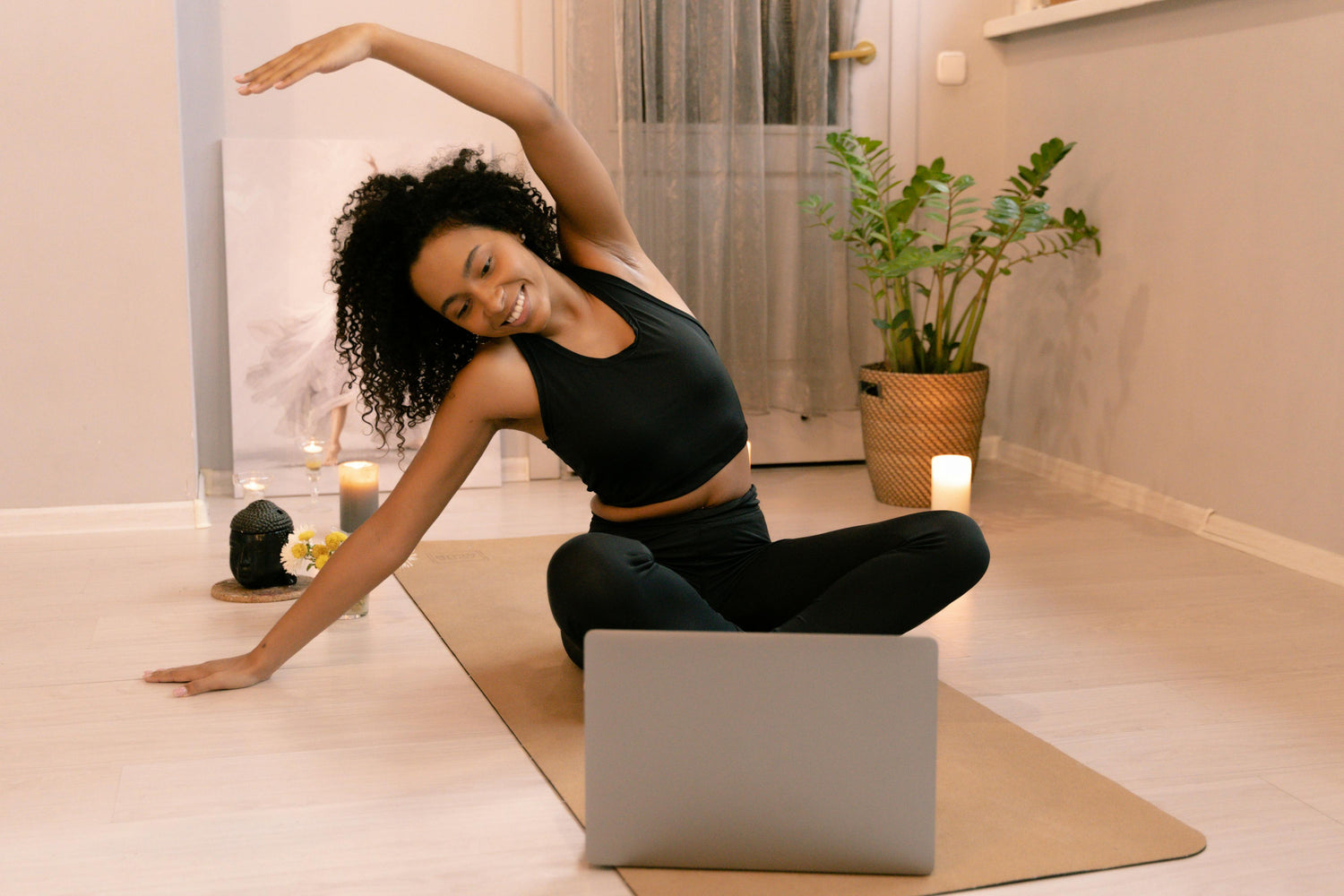
YOGA OR PILATES: A DILEMNATION WORTHY OF HAMLET
Yoga or Pilates: A Hamlet-esque Dilemma
Like the Danish prince in search of truth, many people hesitate between yoga and Pilates without really understanding the difference between them. At first glance, these two disciplines share several points in common: they both promote body awareness , the coordination of breath and movement , as well as deep work on postural muscles . However, their essence and objectives diverge.
Yoga , whose earliest traces date back more than 5,000 years in India , is much more than just a physical activity: it is a philosophy of life that encompasses meditation, postures (asanas), breathing (pranayama) and ethical principles (the Yamas and Niyamas). It is based on the idea that the union of body and mind leads to a state of well-being and inner fulfillment .
Conversely, Pilates is a much more recent method, developed in the 20th century by Joseph Pilates , a passionate about anatomy and movement. He designed this technique to help wounded soldiers of the First World War regain their strength and mobility . Based on muscle control, postural alignment and breathing, Pilates is now used for muscle strengthening as well as for injury rehabilitation and the prevention of chronic pain .
What sets them apart: Yoga takes a holistic approach that integrates body, mind, and breath, while Pilates is more of a functional training and deep strengthening method.
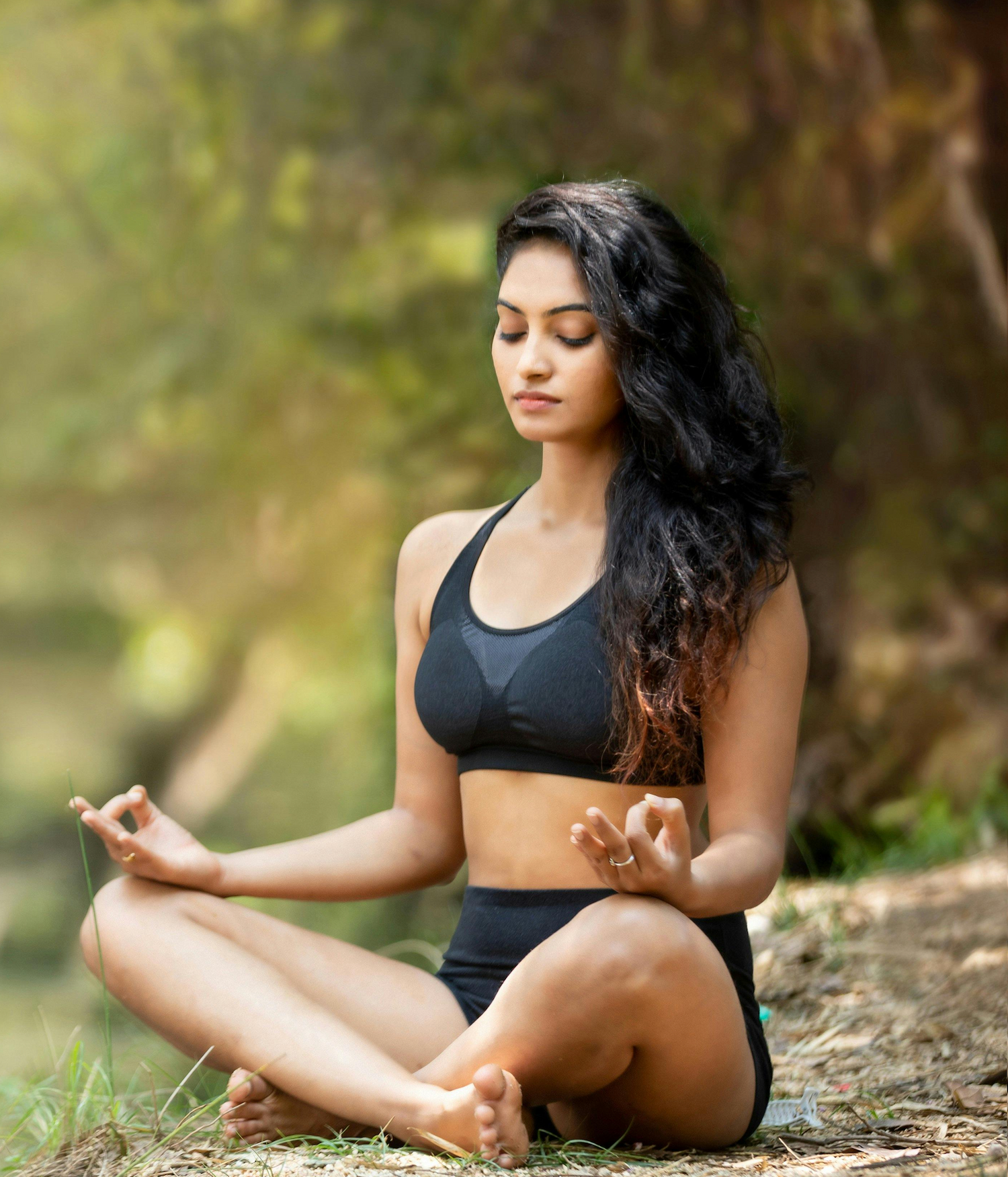
YOGA: THE QUEST FOR BALANCE BETWEEN BODY AND MIND
Yoga is not just about performing postures on a mat: it is a true path of inner transformation , an art of living that seeks to unify the body, breath and mind . Throughout the ages, this practice has evolved, adapting to the needs of modern practitioners while retaining its spiritual and philosophical essence.
An ancestral art in the service of well-being
Yoga has its roots in India, more than 5,000 years ago, through the sacred texts of the Vedas and the Upanishads .
In its modern form, yoga has diversified into many styles suited to individual needs and goals:
- Hatha Yoga : A gentle and accessible approach, ideal for beginners, which emphasizes holding postures and breathing.
- Vinyasa Yoga : a more dynamic practice that links postures in synchronization with the breath, promoting fluidity and tone.
- Yin Yoga : a slow practice where postures are held for several minutes to deeply release tension in the body and work on connective tissues.
- Ashtanga Yoga : A rigorous and athletic form, based on sequences of repeated postures that develop strength, endurance and mental discipline.
- Kundalini Yoga : focuses on awakening vital energy through breathing exercises, postures and chanting mantras.
Each style has its specificities, but all aim to cultivate awareness of the body and mind , promoting overall well-being.
A vital breath to harmonize body and mind
One of the foundations of yoga is conscious breathing (pranayama) . Unlike the automatic and often shallow breathing of everyday life, yoga invites us to fully utilize our lung capacity to oxygenate the body and calm the mind.
- Nadi Shodhana (Alternate Nostril Breathing) : A technique that balances energies and reduces stress and anxiety by alternating breathing between the two nostrils.
- Ujjayi (Warrior Breath) : Often used in Vinyasa and Ashtanga, it generates heat and endurance , helping to maintain focus and improve physical performance.
- Bhramari (bee breathing) : a vibrational breathing that instantly soothes the nervous system, ideal for reducing mental load and promoting a deep meditative state .
A powerful tool for mental and emotional well-being
Beyond muscle strengthening and flexibility, yoga acts as a real antidote to stress and negative emotions.
In short, yoga is not just a physical activity: it is an invitation to slow down, breathe fully and anchor yourself in the present moment . A holistic approach to well-being that goes far beyond the simple execution of postures, and reconnects us to ourselves, to our breath and to our true essence .
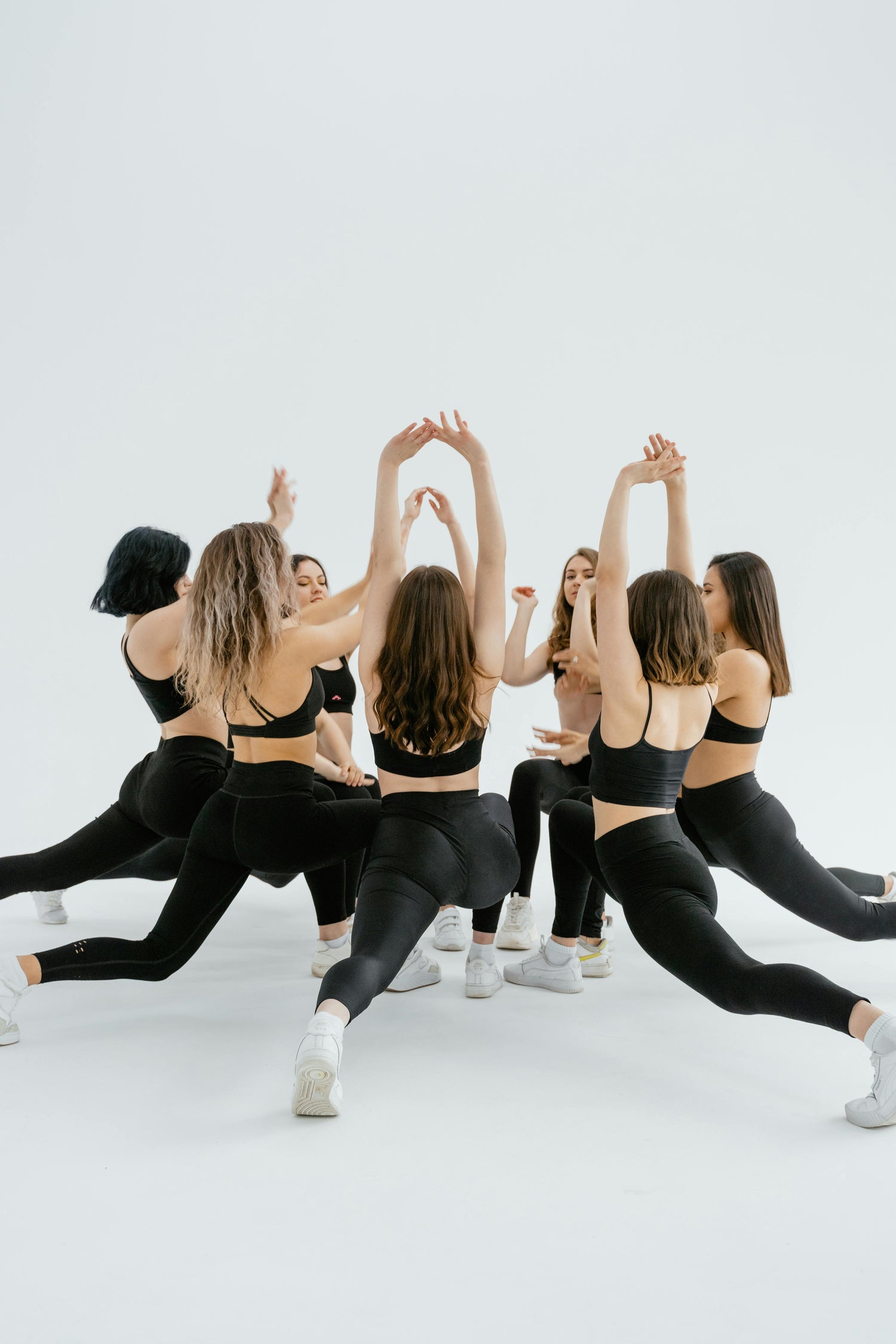
PILATES: THE ART OF CONTROL AND INNER STRENGTH
Unlike yoga, which emphasizes flexibility and mindfulness, Pilates relies on movement control . Each exercise is performed slowly and precisely, with an emphasis on:
- Strengthening postural muscles : It mainly targets the abdominal belt ( powerhouse ), back, glutes and stabilizing muscles. By stabilizing the trunk, it improves balance and posture, reducing unnecessary tension on the spine.
- Body alignment : Each exercise aims to correct postural imbalances, prevent pain and optimize mobility.
- Fluidity and precision : Unlike traditional workouts that rely on repetition and intensity, Pilates favors controlled and harmonious movements, inspired by dance and gymnastics.
Specific breathing to support the effort
One of the key principles of Pilates is lateral thoracic breathing , which differs from the pranayama used in yoga. The goal is to engage the diaphragm while keeping the core of the body active:
- Breathe in through the nose to oxygenate the muscles and lengthen the spine.
- Exhale through the mouth to engage the transverse and stabilize the movement.
This conscious breathing helps to avoid muscular compensation and improve the effectiveness of the exercises.
Powerful work for toning and pain prevention
Pilates is particularly recommended for people suffering from chronic pain or leading a sedentary lifestyle. It is often used in conjunction with physical therapy for:
- Relieve back and joint pain by strengthening deep muscles and realigning the spine.
- Improve recovery and prevent injuries , especially in athletes and dancers.
- Develop long, lean muscles by sculpting and lengthening muscles rather than increasing their volume.
In short, Pilates is a practice that combines strength, precision, and fluidity . Rather than forcing the body, it leads it to strengthen itself gradually and harmoniously, creating a solid foundation for all daily movements. Like yoga, it shows that well-being comes first and foremost from a better understanding of one's own body.
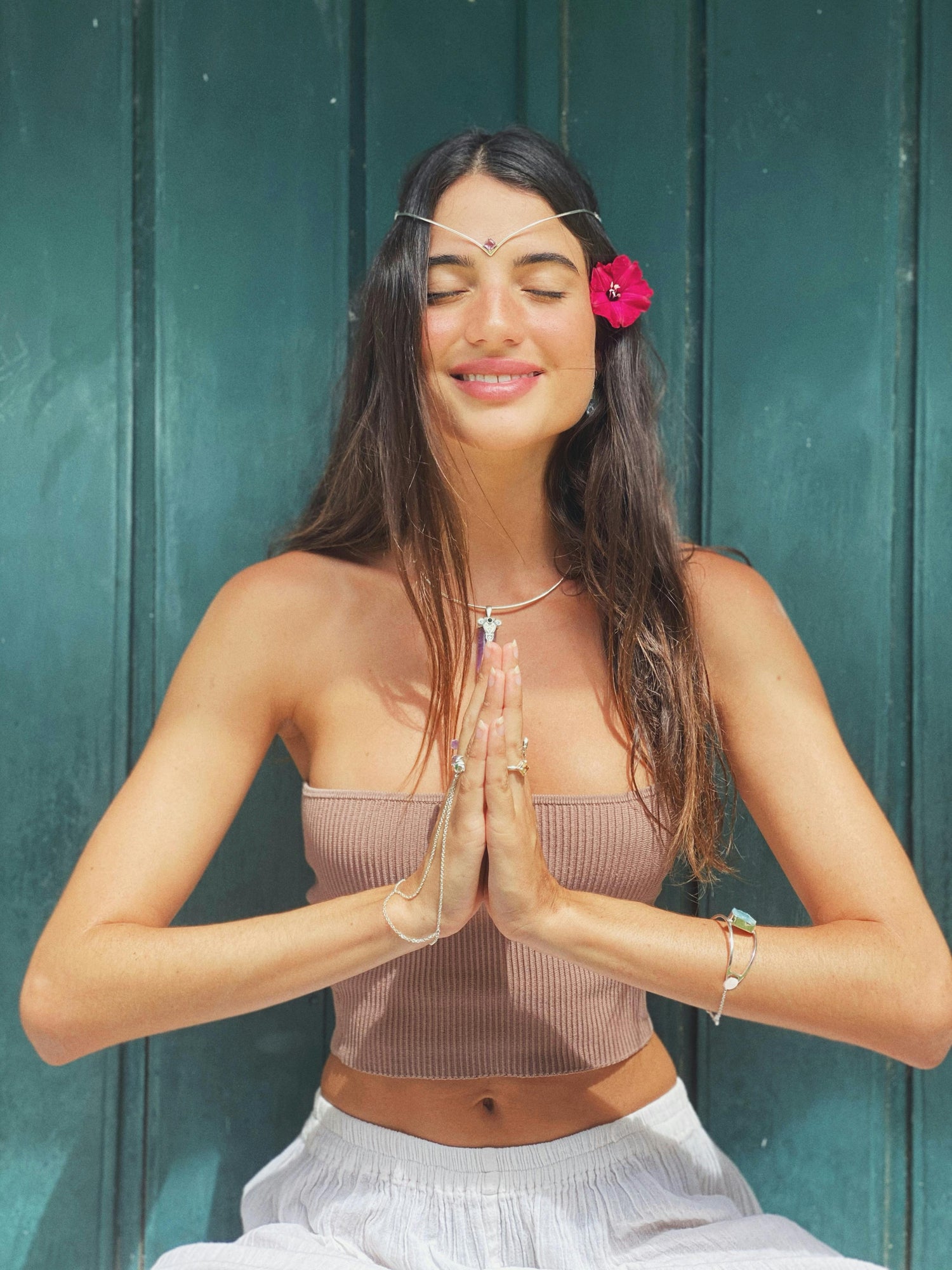
BREATHING AND MOVEMENT: 2 LANGUAGES, 1 SAME INTENTION
While yoga and Pilates may seem like opposites in their approach to the body, they share one essential element: breathing . More than just automatic, it guides movement, improves concentration, and enhances the effectiveness of the practice. Yet their use of breath differs, reflecting their respective philosophies.
Breath in yoga: vital energy and inner balance
In yoga, breathing is seen as the vehicle of prana , the vital energy. Through pranayama , it influences the mind and emotions, promoting inner balance and stress management .
Some key techniques:
- Nadi Shodhana (Alternate Nostril Breathing) : Balances the nervous system and clarifies the mind.
- Ujjayi (victorious breath) : Generates internal heat and improves concentration.
- Bhastrika (breath of fire) : energizes the metabolism and activates vital energy.
Each posture is accompanied by a specific breath, which helps to deepen the stretch, stabilize a posture or calm the mind in meditation .
Breathing in Pilates: control and muscle engagement
Unlike yoga, Pilates uses structured breathing to activate deep muscles and stabilize the body .
Its fundamental principles:
- Lateral thoracic breathing : oxygen without relaxing the abdominal strap.
- Controlled expiration : engages the transverse muscle and protects the spine.
- Coordination with movement : inhale to prepare, exhale during the effort for greater efficiency.
An iconic example is The Hundred , where rhythmic breathing in five inhalations and five exhalations stimulates endurance and activation of the body's core .
Two approaches, one goal
Although different, these breathing practices aim to:
Strengthen the mind-body connection and reduce stress.
Optimize movement by providing fluidity and stability.
Oxygenate muscles and improve endurance .
Soothe the nervous system and regulate emotions.
Ultimately, yoga and Pilates agree on the importance of breath , whether it serves to calm the mind, improve posture, or strengthen the core. In every movement, it remains the common thread of a conscious and harmonious practice .
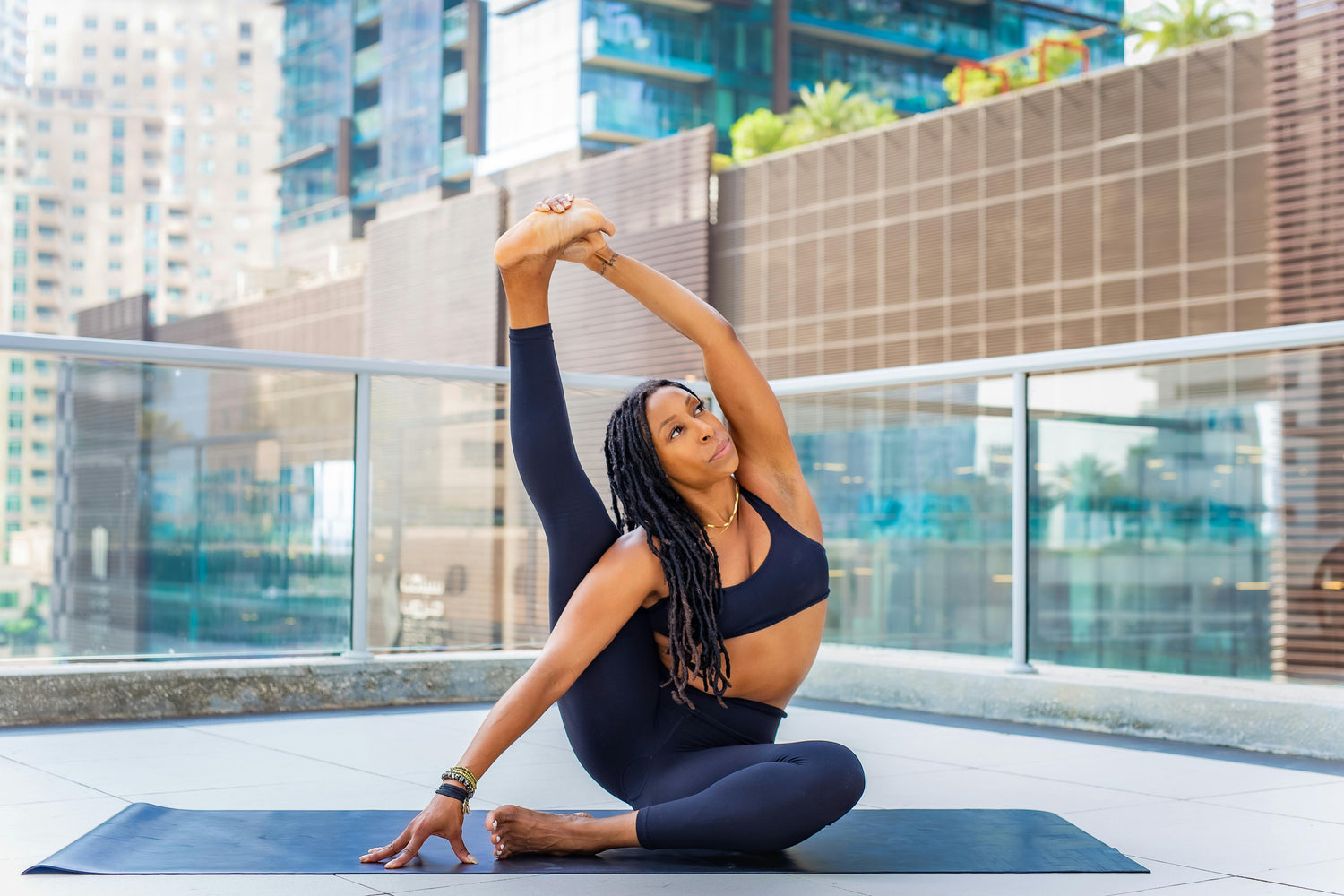
FLEXIBILITY OR STABILITY? A DUEL OF ELEGANCE AND POWER
While yoga and Pilates share a conscious approach to movement and breathing, they differ in their effects on the body. Yoga emphasizes flexibility and openness, while Pilates focuses on core strength and stability. Two distinct yet complementary methods for a stronger, more mobile, and better balanced body.
Yoga: mobility and freedom of movement
Yoga improves flexibility and joint mobility , releasing muscular tension through postures:
- Progressive relaxation : Downward dog or forward bend relaxes the muscle chains.
- Joint opening : Pigeon pose improves pelvic mobility and reduces stiffness.
- Deep tissue relaxation : Yin Yoga works on the fascia by releasing tension over time.
A flexible body is fluid and resilient, but without strengthening, it can be prone to imbalances.
Pilates: Body strengthening and control
Pilates focuses on strengthening deep muscles and improving posture.
- Core Activation : Strengthening of the transverse and stabilizing muscles for better lumbar support.
- Precise muscle control : Exercises like The Hundred and Swan Dive develop tone and coordination.
- Stability and injury prevention : Good core strength protects joints and improves postural balance.
Ideal for those seeking strength and alignment , Pilates prevents pain and optimizes posture.
Why oppose these disciplines?
Yoga promotes fluidity and relaxation, Pilates provides control and stability.
Yoga develops flexibility, Pilates strengthens the core of the body.
Both improve posture and body awareness.
An ideal balance between strength and flexibility
A flexible body without strength is unstable. Conversely, a strong body without mobility is rigid. Combining the two disciplines helps cultivate balance, power, and fluidity.
Whether you practice yoga, Pilates, or a combination of the two, the important thing is to listen to your body and give it what it needs.
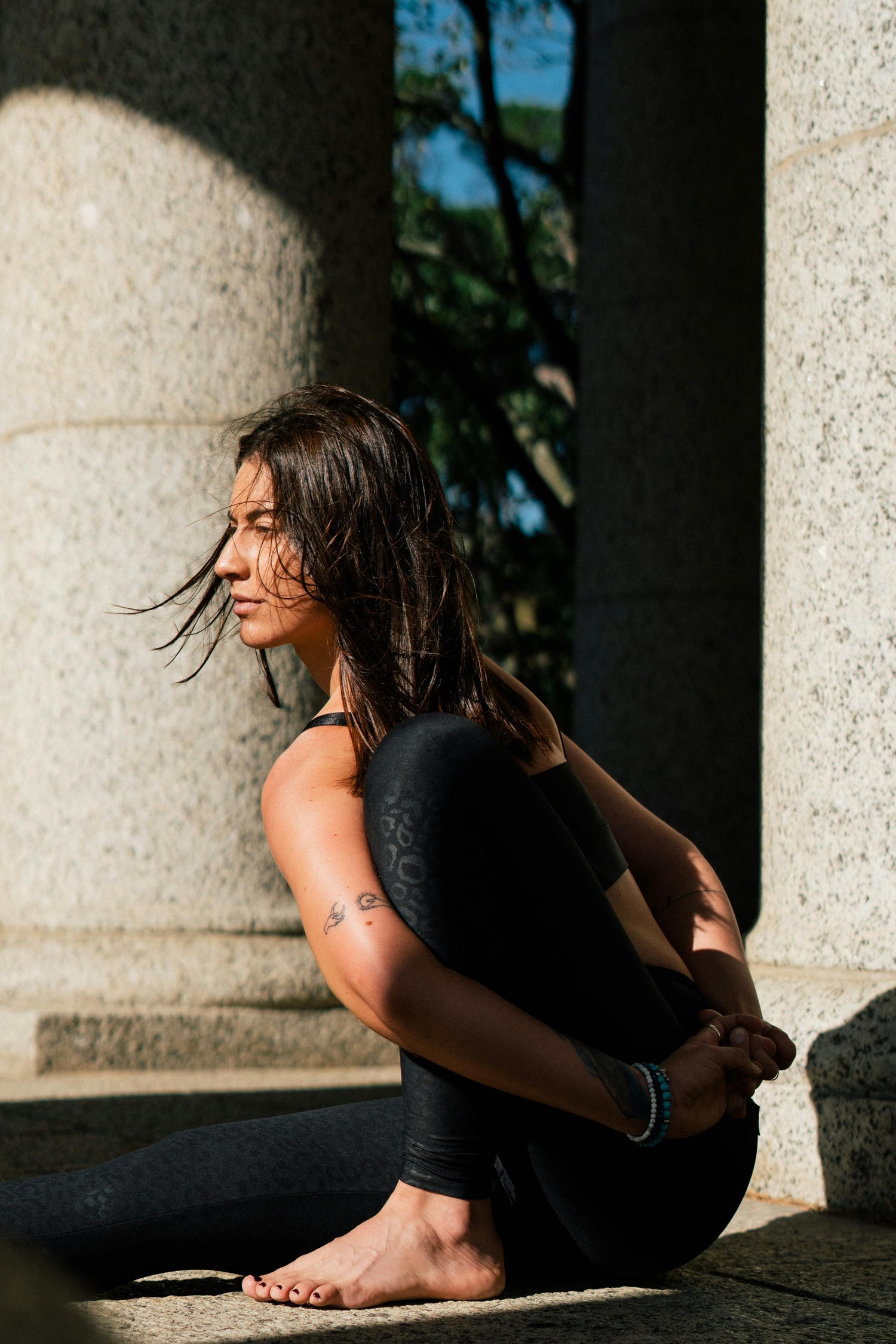
YOGA AND PILATES: WHY CHOOSE WHEN YOU CAN COMBINE?
In this room where flexibility and stability, fluidity and control, anchoring and expansion clash, do we really have to decide? Should we be a yogi seeking elevation or a Pilates practitioner, a master of core strength and precision? Perhaps the answer lies not in opposition, but in complementarity.
If we look at the needs of the body and mind, it becomes clear that these two disciplines are not rivals, but valuable allies. They nourish each other and balance each other perfectly.
Two approaches, one goal: harmony of body and mind
Yoga and Pilates share a common goal: to create a stronger, more flexible, and more conscious body. Their methods differ, but they can enrich each other.
- Yoga prepares the body by working on flexibility and mental anchoring.
- Pilates strengthens deep muscles , improving posture and stability.
- Yoga works on letting go and introspection , while Pilates develops discipline and control of movement.
By combining these practices, we develop an intelligent body, capable of strength and flexibility, engagement and relaxation, precision and fluidity.
How to integrate the two practices?
For yogis: Adding Pilates 1 to 2 times per week will strengthen the core, protect the lower back, and improve muscular endurance. Ideal for holding Chaturanga longer and preventing slumping in balancing poses.
For Pilates enthusiasts: Introducing yoga sessions into your routine will help increase mobility and muscle relaxation, avoiding stiffness associated with repeated strengthening exercises. Poses like the seated twist or downward dog will provide a complementary stretch to the postural work of Pilates.
Alternating the two disciplines : A Pilates session at the beginning of the week to strengthen, followed by a gentler yoga session at the end of the week to recover and relax the body, can be an excellent combination.
In conclusion: Why limit yourself when you can have it all?
Rather than choosing between strength and flexibility, precision and fluidity, engagement and relaxation, why not create a balance between these opposites ?
Yoga and Pilates are not opponents, but two sides of the same coin to balance the body and mind. Like a musical score, they blend together to create a harmonious symphony of control and freedom, grounding and lightness, concentration and letting go.
So, rather than asking the question "Yoga or Pilates?" , perhaps it's time to answer "Why not both?"
Thank you for this quest between strength and flexibility! Being rooted or rising, controlling or letting go... What if the real answer was harmony?
HEALTHY MIND, HEALTHY LIFE
Valentine's Bio
-

VALENTINE
1994, Reunion Island, Mauritius, a Life carried by the Indian Ocean and Yoga
Since childhood, this intrepid traveler has traveled the globe, leaving her footprints on beaches around the world.Passionate about surfing, scuba diving and sailing, she has made the oceans her playground and source of inspiration.
The freedom of the waves, the serenity of the ocean depths and the wind in his sails have punctuated his journey, always guided by a quest for connection with nature.
It was through her explorations that yoga became more than a practice for her – it was a way of life.
Between early morning surf sessions and meditative sunsets, she found in yoga a perfect balance of strength, flow and self-awareness.
Today, she combines her passion for water sports with teaching yoga and is part of the Yogaterrae team, here in France, in the South West and often remotely :)
This adventurer is a true source of inspiration for anyone who aspires to live in harmony with their body and nature.
Through her stories of incredible experiences, she invites everyone to open up to a world where every wave, every breath and every posture is a celebration of life.



